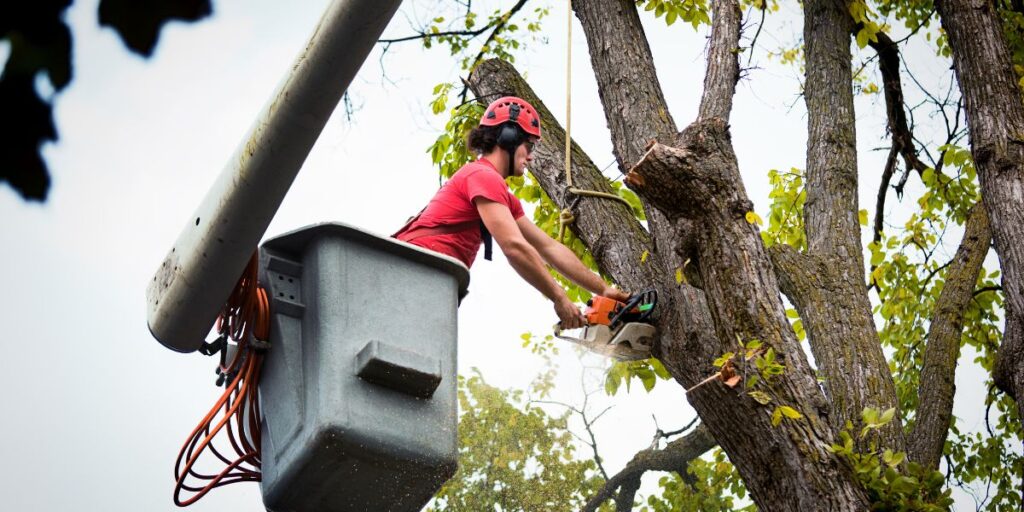Introduction
Tree cutting is a vital service that helps maintain the safety, health, and appearance of trees. Proper cutting removes damaged, diseased, or overgrown branches that can pose risks to people and property. Professional tree cutting services use trained personnel and specialized equipment to perform this work safely and efficiently. Understanding when and why to seek professional help ensures that trees are managed correctly, reducing hazards and promoting healthy growth. This article explains the common reasons for tree cutting, signs indicating professional intervention, safety considerations, and the benefits of hiring reliable tree cutting service.
Reasons for Tree Cutting
Tree Health and Disease Management
Tree cutting plays a key role in managing tree health. Removing dead branches and pruning limbs affected by fungal infections or pest infestations helps prevent the spread of disease. This targeted removal improves the overall vitality of the tree by eliminating damaged or infected parts. Regular maintenance ensures that healthy growth is supported, reducing the risk of decline or premature death.
Safety and Risk Reduction
Cutting trees is essential to reduce risks posed by unstable branches, storm damage, and proximity to power lines. Hazard removal decreases the likelihood of branches falling unexpectedly, which protects both people and property. A thorough risk assessment identifies areas of concern before work begins, allowing for safe and controlled tree cutting that minimizes accidents.
Property and Landscape Enhancement
Tree cutting also improves property aesthetics and functionality. Overgrown trees can obstruct views, block sunlight, or interfere with buildings and other structures. Shaping and controlling the size of trees enhances the landscape’s appearance while maintaining harmony with the surrounding environment. Well-maintained trees contribute positively to property value.
Signs You Need Professional Tree Cutting Help
Visible Damage or Disease Symptoms
Signs such as cracked bark, fungal growth, and leaf discoloration indicate structural weakness or infestation. These symptoms warrant early intervention to prevent further damage. Professional assessment and cutting can remove affected areas, helping preserve the tree’s health and safety.
Unsafe or Hazardous Conditions
Trees that lean dangerously, have dead branches, or show root damage pose serious risks. These unstable conditions require immediate attention to prevent accidents. Professional cutting services address these hazards safely and effectively, reducing the chance of injury or property damage.
Difficulty in Access or Tree Size
Large trees or those located near buildings and power lines present challenges that require specialized skills and equipment. The height and location of such trees make cutting dangerous without professional tools and expertise. Reliable tree cutting services are equipped to handle these complex situations safely.
Safety Considerations in Tree Cutting
Importance of Professional Training and Certification
Certified professionals follow established safety protocols set by organizations such as the International Society of Arboriculture (ISA) and the Occupational Safety and Health Administration (OSHA). Their knowledge reduces workplace accidents, ensuring safe operations throughout the tree cutting process.
Use of Proper Equipment and Protective Gear
Using the correct tools, including chainsaws, cranes, and personal protective equipment (PPE), is critical for safety and efficiency. Equipment with built-in safety features protects workers and property, while proper gear minimizes injury risks during cutting tasks.
Legal and Environmental Compliance
Tree cutting often requires permits and must adhere to local regulations, especially when protected species or conservation areas are involved. Professional services manage permit acquisition and follow environmental laws to avoid fines and support conservation efforts.
Benefits of Hiring Reliable Tree Cutting Services
Efficient and Safe Tree Cutting Operations
Experienced teams manage time well and implement risk mitigation strategies. This leads to faster project completion with minimal disruption to the surrounding area and residents.
Cost-Effectiveness Over DIY or Unlicensed Services
Professional services include insurance coverage, which protects clients from liability and potential property damage. This financial protection often makes hiring experts more economical than attempting tree cutting independently or with unlicensed providers.
Comprehensive Services Including Cleanup and Stump Removal
Reliable companies offer full-service options such as debris hauling and stump grinding. These services restore the site’s appearance and prevent hazards from leftover wood or stumps.
How to Choose a Reliable Tree Cutting Service
Checking Credentials and Insurance
Verifying licenses and liability insurance ensures that the company is legally authorized and financially responsible. This protects property owners from unforeseen costs related to accidents or damages.
Assessing Experience and Customer Reviews
Evaluating the provider’s years in business and reputation through customer feedback offers insight into their reliability and quality of service.
Obtaining Detailed Estimates and Service Guarantees
Clear contracts with transparent pricing and service guarantees help avoid hidden fees and ensure accountability throughout the project.



